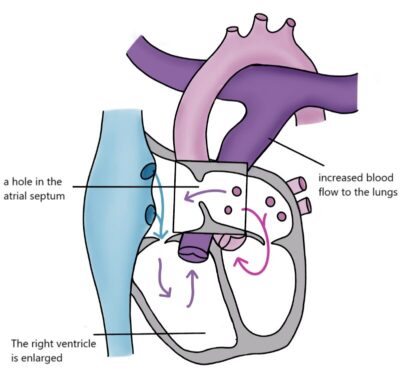Atrial Septal Defect, ASD
In this condition, there is an extra opening in the atrial septum (Atrial Septal Defect, ASD). Typically, the fetal oval opening closes during the first year of life, but it can also remain open. In such cases, oxygen-rich blood from the left atrium flows through the atrial septal defect into the right atrium and then to the ventricle and back to the lungs. As a result, the right atrium, right ventricle, and pulmonary artery enlarge.
